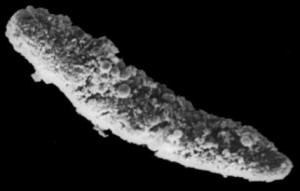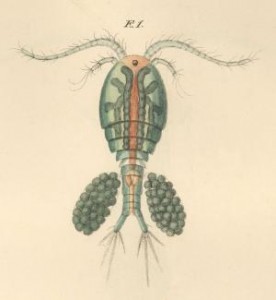 A few recent experiences in the realm of potty training have me thinking about the shortcomings of the human machine. Evolution, for the most part, has been kind to us. But the intelligent designer was missing in action, apparently, when it came time to assign our powers of excretion and elimination.
A few recent experiences in the realm of potty training have me thinking about the shortcomings of the human machine. Evolution, for the most part, has been kind to us. But the intelligent designer was missing in action, apparently, when it came time to assign our powers of excretion and elimination.
The fish and birds have it easiest, I suppose—combining liquid and solid wastes into a single stream just makes sense, and whether your medium of movement is water or air, each free-flowing deposit drops or washes away clean.
Not so with the human toddler, a remarkable creature seemingly capable of shitting its own weight on a daily basis. And save me, someone please, from the rivers of urine. I love my son, but does he have to be so hard to keep clean and dry? If only he’d been born more like one of those desert lizards, the ones that have done away with liquid waste altogether, secreting solid dabs of uric acid instead.
The elimination situation of young humans on the verge of potty training is not helped by the wads of super-absorbent polymer we strap tightly onto regions that would benefit from more ventilation, not less. It’s a sticky situation all around, but biology could have made things easier for humanity, if only she had smiled on us as kindly as she did the copepod.

These wee crustaceans swim in the plankton throughout the global ocean, and make terrific fish food. They also, along with related creatures, make what might just be nature’s most perfect poop.
Behold: the copepod fecal pellet. To see it—you’d need help, ideally in the form of a dark-field dissecting microscope—is to know instantly what it is. But what makes these diminutive, ~200-300 micron long turds truly remarkable, beside their very turdishness, is the packaging. Each fecal pellet is crisply packed within a tight sheath of chitin called the peritrophic membrane.
The reason, biologists assume, is that copepods feed upon sharp and spiky phytoplankton, including glass-walled diatoms, the remains of which would cause rather more than discomfort passing out uninsulated. The consequences are even more interesting–the tight packing lends these fecal pellets the density, hydrodynamic shape and resistance to bacterial decomposition needed to sink down into the deep ocean.

That means lunch for bottom dwellers, and consequences for global climate in the form of carbon exported far away from the atmosphere for a thousand years at least. (Each pellet is tiny, but copepods are legion–the single most abundant animal on the planet by weight, by most estimates.)
That’s all very useful, of course. But what if the same system could be engineered on the human scale? You’d d be left with something more like a neatly wrapped burrito than the monstrous situation we’re faced with now. Imagine the convenience. The cleanliness. The dignity.
It’s a futile dream I suppose, and not just because humans can’t synthesize chitin. (Thin sheets of keratin should substitute nicely, in a pinch.) And so we are left to ponder, with envy, the tidy dignity of the copepod. And to thank fate that at least we got a better deal than the sheep.
***
Images Top: Manneken Pis, Brussels. Middle: Copepod fecal pellet, source unknown. Length is approximately 200 microns. Bottom: Freshwater copepod, artist unknown.
We get a better deal than geese too. But I’m not going to elaborate.
@Ann, I’ve always thought it would be worse to be the goose’s neighbor than the goose, if you know what I mean.
@Benete, we get a lot of link-spam comments like yours, and we delete them all. Yours was too good not to approve though, just for the sheer unlikeliness that you were in fact talking about this exactly. If I were a link spammer, by the way, I’d want my spam links to lead somewhere more awesome, by the way. I’d also be more careful with my grammar, but that’s neither here nor there.)
I’m on your team, all the way, with a 22 month old and 5 year old (still in pull ups, still desecrating the bed). The thing that has continued to surprise me is how blase we’ve become about our children’s crap. We’re surrounded so completely by diapers, pull ups, odors, etc that it’s become impossible to step back. And for that reason, I very much appreciated this post. I was able to step back and see the possibilities. Of course, then I remembered the two poops I changed within an hour, before school and work. I will dream of the copepod tonight.
Bravo Tom. I cracked up when I got to “The dignity.” I suspect this copepod business could somehow be commercialized. I’m thinking “copepod sacks” or “copepod intestinal liners”. Insert a stack of thirty and you’ve got dignity all month long.
Got a great laugh out of this one, Tom. Not long after my first son was born he ejected a glorious arc of urine right into the nurse’s face. Her comment “well, we know the waterworks are functional.” And I fondly recall the deep interest with which we examined all those first poops. Grey poupon, anyone?
Seriously, I think you might be onto something. A new carbon sequestration method involving pelletizing human feces? It’s worth a closer look. Literally.
Tom, Erika– do you think it is time to post the documentation of your nephew’s standing poop? Just to add an artistic/architectural note to this admittedly cool scientific dialog.
My reaction to the copepod’s fastidiousness: Well, if you DO shit where you eat, it’s wise to evolve a way to keep it from getting all mixed up together.
Thanks for the comments, everyone! Rick, in response to yours, I really did try to hold off mentioning this, but I no longer can: copepods, unfortunately, are coprophagous. That’s right, they quite cheerfully eat their own fecal pellets, given the chance.
It’s not that they want to, necessarily. They actually just don’t discriminate on anything but size–if a particle fits with their mouth parts, they ingest it. Some observers have suggested this as another explanation for why they and other planktonic grazers would go to the trouble of packaging their poops, so as to export them from the kitchen more quickly. I don’t buy it though–especially during phytoplankton blooms, those poops packed with good, digestible nutrition, including, sometimes, completely intact phytoplankton cells. As fastidious as copepods clearly are, surely they wouldn’t squander potential food without a good reason!